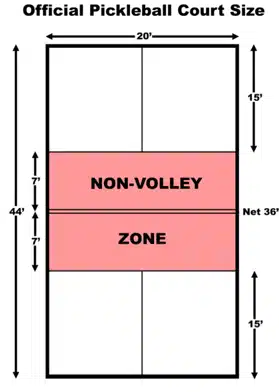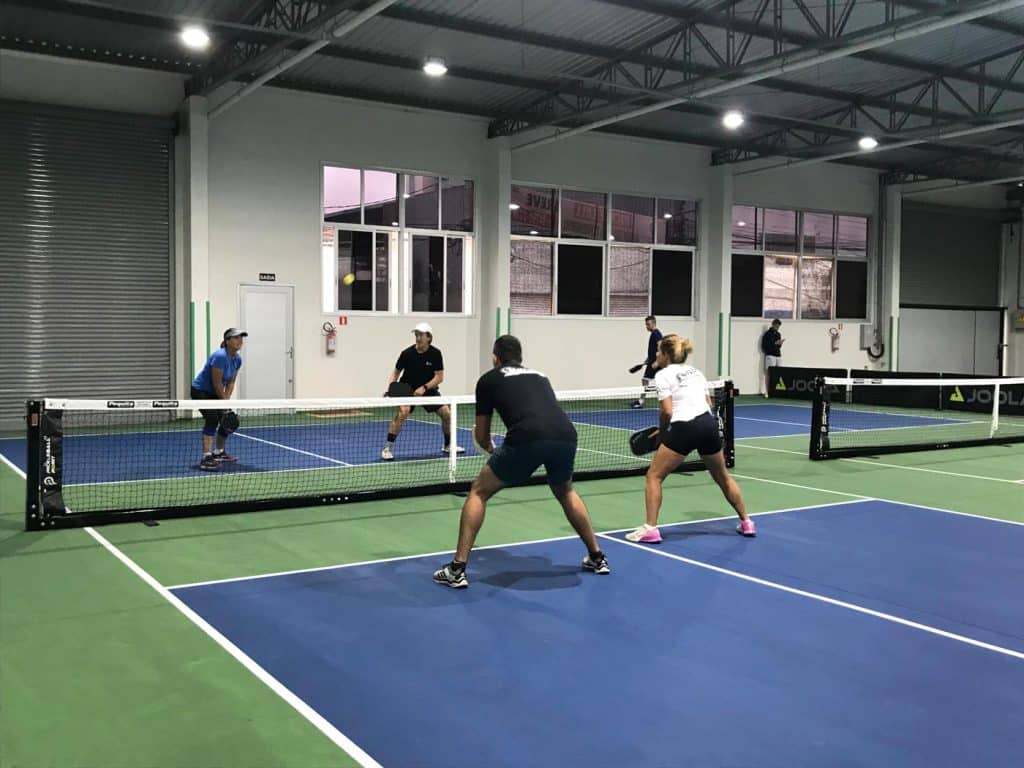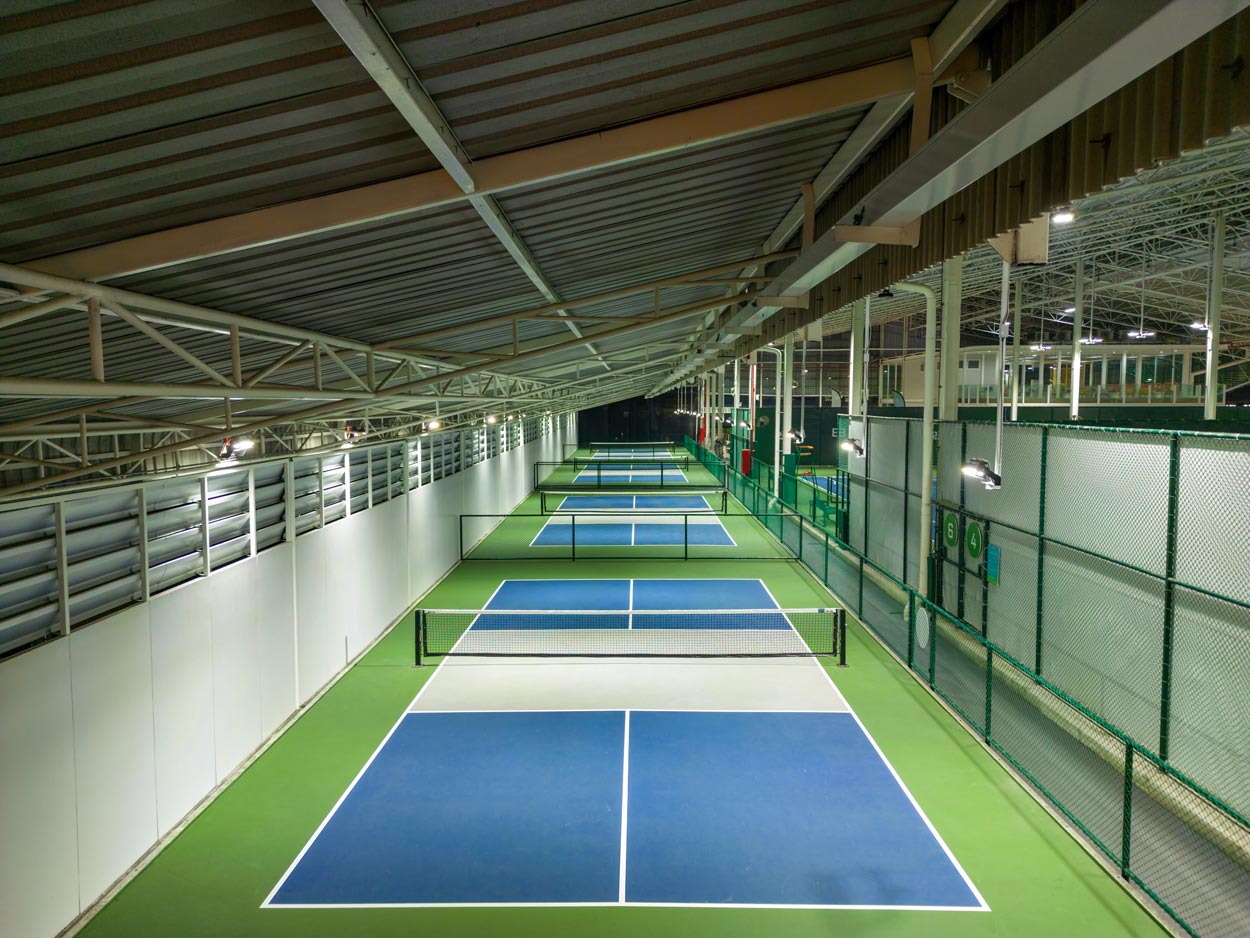Indoor pickleball court construction is becoming a hot topic as the sport keeps popping up everywhere—community centers, gyms, you name it. Building a decent indoor pickleball court takes a bit of planning, the right materials, and a sharp eye for design and detail. Picking a good surface, making sure the court’s the right size, and leaving plenty of overhead room—those are the basics you really can’t skip.
COMPARE PRICES & SAVE UP TO 33%
Owners and planners also need to think about costs, lighting, parking, and keeping the court comfortable all year. A solid acrylic coating on the court and at least 18-20 feet of ceiling height? That’s what players want, and honestly, it makes the place more appealing. If you can find builders who know their stuff, they’ll tailor the court to fit your needs, which pays off in both performance and long-term value.
Key Considerations for Indoor Pickleball Court Construction
Putting together an indoor pickleball court isn’t just about slapping down a net. You’ve got to plan so the space feels good, works well, and keeps players coming back. That means picking the right court size, finding a solid spot, and setting a budget that covers more than just the basics.
Indoor Pickleball Court Dimensions & Designs
Getting the dimensions right for indoor pickleball courts is non-negotiable if you want fair games and nobody getting hurt. Every measurement matters, from the court’s size to the space above and around it.
Official Court Size Specifications
The go-to size for an indoor pickleball court is 44 feet long by 20 feet wide. This covers the playing area and all the lines. You’ve got baselines, non-volley zones, service areas, and sidelines—each has its spot.
If you need a mental picture, here’s a quick breakdown:

| Area | Measurement |
|---|---|
| Total court length | 44 feet |
| Total court width | 20 feet |
| Non-volley zone | 7 feet from net |
| Service area width | 10 feet per half |
| Net height (center) | 34 inches |
| Net height (sideline) | 36 inches |
These specs line up with the official standards for serious play. Just make sure the lines are easy to see—nobody likes arguing about calls.
Hosting tournaments or just want more room? Shoot for 34 feet wide by 64 feet long. That way, players aren’t crashing into walls or each other. Ceiling height’s a big deal too: 18 to 20 feet is the sweet spot, especially above the lights so nobody’s hitting the ceiling mid-lob.
If you’re installing multiple courts, leave space in between so folks don’t end up in each other’s games. Clear lines, proper net height, and visible boundaries are a must for safety.
Ceiling Height and Clearance
Overhead clearance is one of those things you don’t think about until it’s too late. The minimum is 18 to 20 feet. That gives players room to send up lobs without worrying about the ceiling getting in the way.
Lower ceilings? Honestly, they just mess with the game and limit shot choices. Higher ceilings also make the space feel bigger and help with airflow. When you’re planning, don’t forget to factor in light fixtures—those count toward the total height.
Buffer Zones and Safety Areas
Extra room around the court keeps everyone safer and just makes the place feel less cramped. Each court should have at least 10 feet at the ends and 5 to 10 feet on the sides as a buffer.
For tournaments or even just casual games, good buffer zones mean fewer injuries and smoother movement for players and refs. It’s also easier to chase down stray balls or just watch the action.
Most facilities end up needing about 30 feet wide by 60–64 feet long per court, including safety space. The buffer zones should have flooring with decent grip and a bit of cushion—nobody wants to slip or get hurt off-court.
How Much Does It Cost To Build An Indoor Pickleball Facility?
If you are just looking at the metal shell kit for a 65 x 85 x 20 building, you can anticipate prices in the $48,000 to $98,000 range depending on the type of steel required.
But you need to factor in other required costs too. Budgeting for an indoor pickleball court isn’t just about the floor and building size. Big costs include prepping the site, building the court, adding lights, and making sure the climate’s under control. Insulated roofs and walls might cost more upfront, but they’ll save on utility bills later.
Some things you’ll want to budget for:
- Type of flooring (acrylic, cushioned tile, etc.)
- Lighting setup
- Spectator seating
- Locker rooms or restrooms
- Security and fencing between courts
And don’t forget to set aside a little extra for regular upkeep—like resurfacing or swapping out nets. Before you finalize anything, it’s smart to skim through a full guide on pickleball court construction costs and amenities so you’re not caught off guard. It just keeps things running smoother.
Indoor Pickleball Surface Materials and Flooring Options

The court surface you pick affects everything—how the game feels, how long the floor lasts, and whether players go home sore. Each material has its own pros and cons for grip, maintenance, and safety.
Types of Indoor Court Surfaces
Popular indoor pickleball court surfaces are concrete, cushioned acrylic, polyurethane, and modular tiles. Concrete’s tough and gives a nice bounce, but it’s rough on knees and ankles. Cushioned acrylic is a bit softer and gives a good mix of grip and shock absorption, so it’s a favorite for many clubs.
Polyurethane is another solid choice. It lasts and works for everyone from beginners to serious players. Modular tiles are catching on, too—they go over almost any subfloor and are easy to swap out if a section wears down.
Pick a surface that fits your players’ needs and meets official standards.
Shock Absorption and Player Safety
Shock absorption is huge for keeping players healthy. Hard floors like bare concrete can really wear people down, and over time, that means more aches and injuries. That’s why a lot of places go with cushioned systems that soak up some of the impact.
Polyurethane and newer modular tile floors usually have built-in shock absorption layers, so they’re easier on joints. These materials help cut down on ankle, knee, and back issues, especially for folks who play a lot.
Grip matters, too. Slick floors are just asking for trouble, so make sure your surface keeps its traction—even if it gets a little damp. Most good systems get tested for slip resistance before they’re installed.
Surface Coating Choices
The coating you choose can make a court look and play better—and stay that way. Acrylic coatings are everywhere because they’re smooth, tough, and stand up to wear. You can put acrylic over concrete or asphalt, and it helps keep court lines sharp.
Polyurethane coatings are another solid option. They create a seamless, durable layer that handles a lot of traffic. Some places go for specialty coatings to boost traction or cut down on glare from the lights.
Cleaning and maintenance get a lot easier with a good coating. High-quality coatings protect the base from stains and make sweeping up dust or debris less of a chore.
Choosing Professional Indoor Pickleball Court Builders

Picking the right contractor is honestly one of the biggest decisions you’ll make for your project. The pros know how to design and build courts that don’t just look good, but actually play right and stay safe.
When you’re shopping around, look for builders who actually have experience with sports courts—pickleball, tennis, or at least multi-sport surfaces. A lot of companies use similar building methods for different sports, so a solid track record helps.
Good builders should offer:
- Design Consultation: Help with layout, material choices, and safety tips.
- Project Management: Someone keeping an eye on things from start to finish.
- Quality Materials: Stuff that stands up to a lot of play.
- Warranty & Support: Help if something breaks or needs a tweak down the road.
Don’t be shy about asking for reviews, photos, and references. Getting a few bids is smart—it gives you leverage and options. Some companies focus on commercial sports construction, which is worth considering if you’re planning something big.
Here’s a quick table with what to keep an eye out for:
| Feature | Why It Matters |
|---|---|
| Experience | Ensures proper technique |
| Material Quality | Long-lasting and safe surface |
| Support | Ongoing maintenance or repairs |
| Previous Projects | Proof of skills and reliability |
Getting the right builder on board makes all the difference. It’s the foundation for a court that’s fun, safe, and lasts for years.
Frequently Asked Questions
There’s a lot to consider with indoor pickleball courts—dimensions, materials, codes, and how to keep costs under control. Good plans make it easier to build a court that actually works and lasts.
What are the standard dimensions for an indoor pickleball court?
Regulation size is 20 feet wide by 44 feet long, including the lines. You’ll want extra space around the court—usually about 30 by 60 feet total—so players have room to move. If you want the nitty-gritty, check out the pickleball court dimensions from the official folks.
How much does it typically cost to construct an indoor pickleball court?
Prices jump around based on where you are, what you build with, and labor rates. For a single court, you’re usually looking at $45,000 to $65,000, depending on the floor and any extras like special lights or ventilation.
What materials are recommended for the flooring of an indoor pickleball court?
Most folks go with cushioned acrylic, modular tiles, or polished concrete with a special coating. The main thing is that the floor shouldn’t be slippery, should feel smooth, and needs to hold up to a lot of play. Cleaning should be easy too.
Are there specific building codes or regulations that apply to indoor pickleball court construction?
Codes change depending on where you are, but you’ll usually have to follow rules for fire safety, ventilation, and accessibility. You might need a permit before you start. Always check local requirements so you don’t run into problems later, and to make sure your court is safe for everyone.
What are the most cost-effective methods for constructing an indoor pickleball court?
Of course we are biased here, but we think steel building kits are perfect for value, fast construction and durability. Fabric / clear span buildings are another solid option but they will not last as long as a properly construction steel builing.
Another good option is repurposing spaces you already have—like an old gym or maybe a warehouse that’s just collecting dust—can really cut down on expenses. If you’re okay with the basics, opting for simpler flooring and skipping fancy add-ons will keep things affordable. Sometimes local installers throw in package deals that cover both materials and labor, which is honestly pretty convenient.

